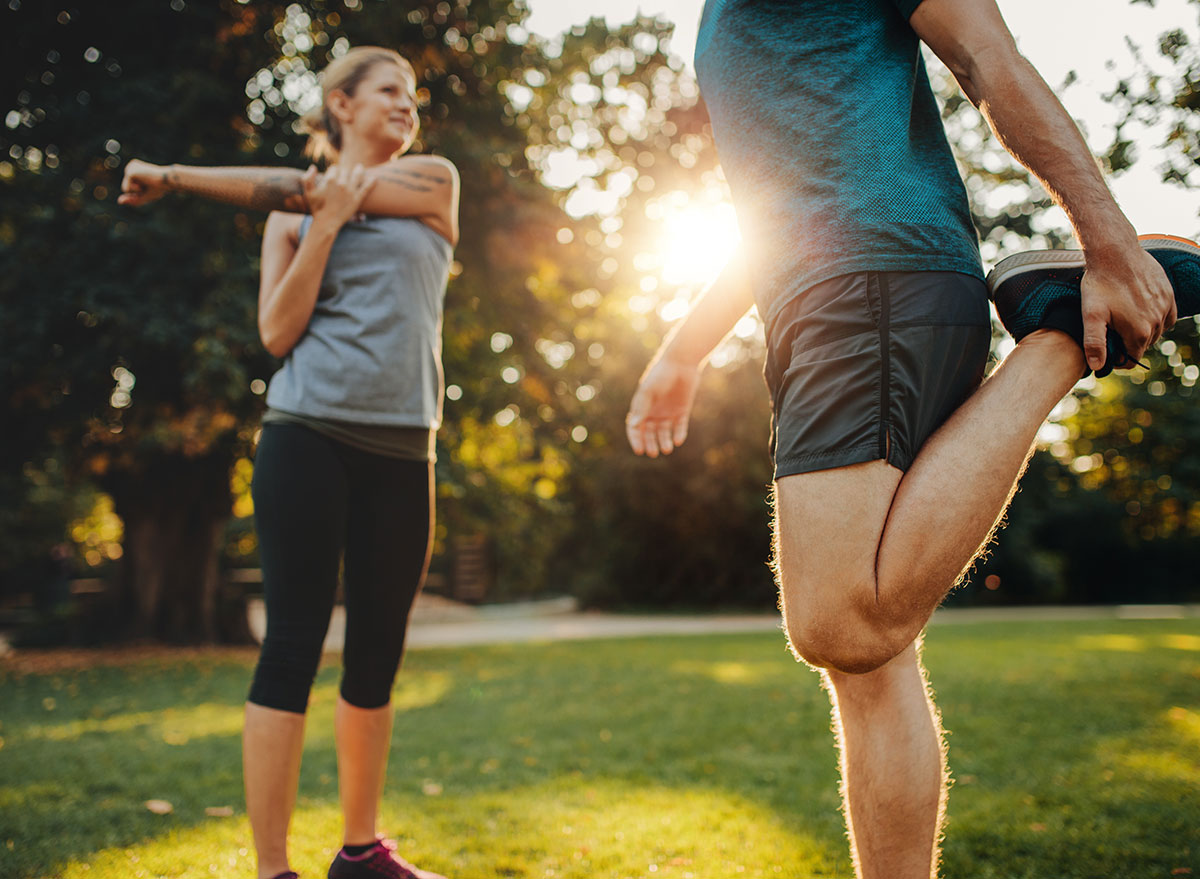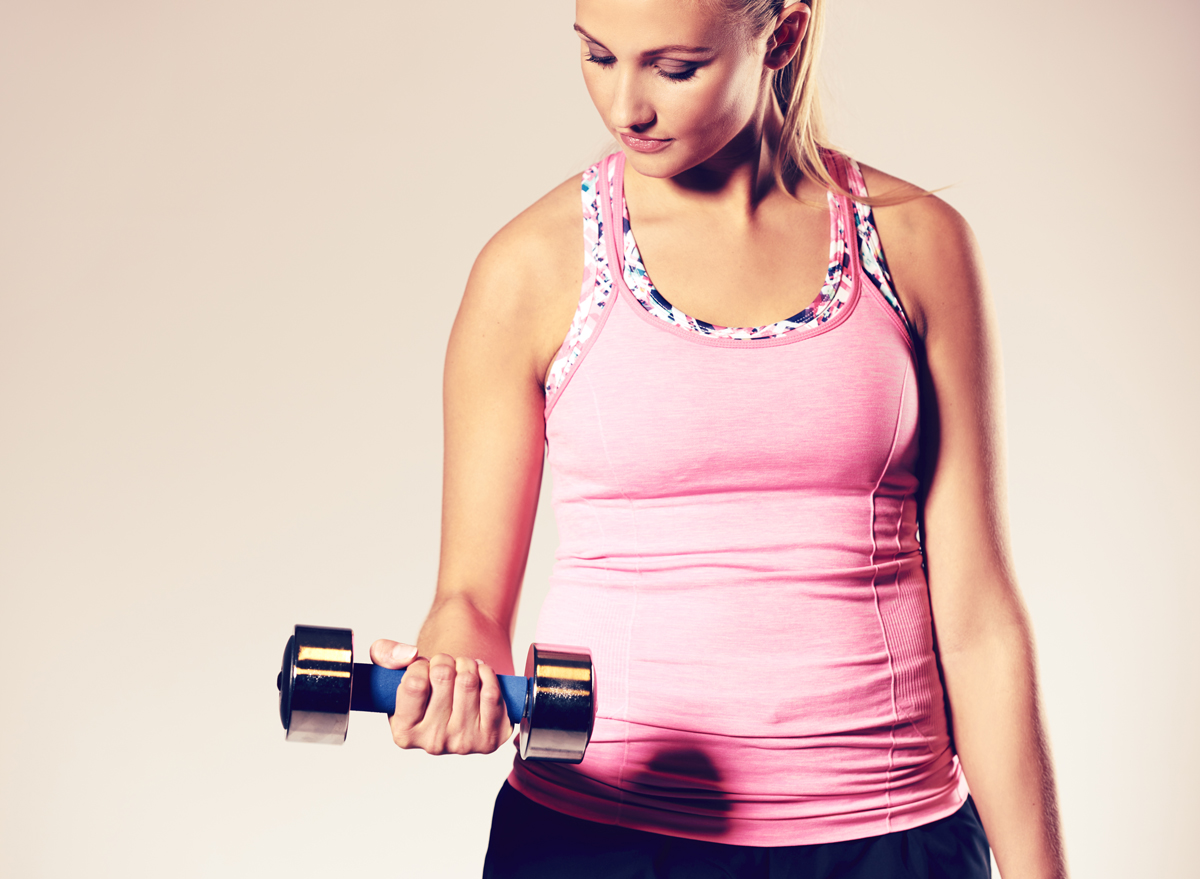15 Exercise Mistakes That Are Ruining Your Workout

Got your exercise in today? Great. We applaud your effort. But are you getting the most benefit out of the time you put in? If you are making these 15 common exercise mistakes you could be wasting your time—or worse, setting yourself up for an overuse injury that can keep you out of the game for a long time. Let's fix these wrong moves.
Skipping exercise because you don't have time

Schedule exercise as you would a business meeting. Put it on your calendar, and "schedule it for first thing in the morning before the businesses of the day interferes," suggests Autumn Calabrese, Beachbody Super Trainer and author of the new book, Lose Weight Like Crazy Even if You Have a Crazy Life! When you can't squeeze in a 30-minute workout, build mini fitness sessions through your day, she says. "You can do anything for 60 seconds," says Calabrese. Try this 60-second jumping jack challenge: Start with 60 seconds of jumping jacks, followed by 30-seconds of rest, then jog in place for 60 seconds. "See how many times throughout the day you can do this 2-set challenge."
You skip your warmup

Never skip a warmup—even before the shortest of exercise sessions—or you'll dramatically boost your risk of injury. As you get older, your muscles and tendons become less flexible. "Muscles can tear easily because they have less water content and they're brittle and less elastic," says Clare Safran-Norton, clinical supervisor of rehabilitation services at Brigham and Women's Hospital. A good warmup involves some light cardio exercise, like high knee lifts, jumping jacks, or a vigorous walk and some dynamic movements like arm circles, lunges, and burpees. This type of warmup raises your body temperature and elevates your heart rate to shuttle blood to your limbs.
You don't check your pee

Being dehydrated can not only reduce the effectiveness of your workout, it's a major factor in how much post-workout soreness and fatigue you'll feel. Check the color of your urine after an exercise session. It should be the color of light lemonade. If it's the color of a Post-It note, you need to drink more water. The American College of Sports Medicine recommends you drink 16 to 20 ounces of water 4 hours before exercise and another 8 to 12 ounces 10 minutes before. Then sip water every 15 or 20 minutes while exercising. If your exercise session is a marathon in length—in other words—more than an hour long and pretty intense, add a sports drink to your hydration plan to add electrolytes that you'll lose through sweating.
You stretch before a race

Bending your leg and pulling your heel up to touch your butt is the classic static stretch everyone does before a 10K. But it could slow you down. According to recent research, static stretching—that is, holding a stretch for 30 to 45 seconds (think hamstring stretches, groin stretches, etc.)—can impair your athletic performance. Static stretches are best used as part of your cool-down routine to help prevent injury.
Not putting some "play" into your fitness plan

"Fitness is great, but it shouldn't always be the goal of exercise," says fitness coach David Jack, consultant major fitness brands like Reebok and Men's Health. "It's important to put some 'play' into your exercise to make it fun, keep your motivation strong, and gain the powerful mood-boosting endorphins in your brain that result from getting lost in the game."
Your workouts are too challenging

Impatience often leads to injury. "Trying to do challenging workouts on a base that can't support it will almost always lead to fitness stealing your fitness, not serving it," says Jack. "You need to build a base of good fitness before you can start pushing your muscles hard, otherwise you can set yourself up for soreness and injury, which will set you back." Start slow, rest at least a day between strength workouts, and progress at a reasonable pace.
You don't lift weights for fear of "bulking up"

A lot of women avoid strength training because they think exercising with barbells, dumbbells, and machines will make them muscle-bound and masculine. Don't worry, says certified strength and conditioning specialist Holly Perkins, author of Women's Health Lift to Get Lean. "It is physiologically impossible for women to bulk up (a process called hypertrophy) in the first six weeks of a strength-training program. As a woman, you simply do not have enough testosterone to pack on big muscles the way your boyfriend can. Strength training offers whole-body health benefits—weight loss, protection from osteoporosis, greater energy—reverse age-related muscle loss, reduce risk of insulin resistance—so it should absolutely be done by every woman."
You reward yourself with food

After a tough, sweaty workout, you might think you've earned the right to indulge in a triple scoop of ice cream. Sorry. That attitude may be the reason you aren't shedding the pounds. In one splurge, you'll likely consume double, even triple, the number of calories you burned off through exercise. "People think they can eat more if they exercise, and that's one negative mindset you have to get rid of," advises Ilana Muhlstein, RD, author of You Can Drop It! How I Lost 100 Pounds and You Can Too. Instead of rewarding yourself with food, pat yourself on the back for your efforts with a no-calorie treat like a manicure or buying some sporting goods.
You don't breath properly

"Not understanding or practicing proper breathing techniques when doing mobility work or strength training and conditioning can affect overall performance," Mandi Love owner of RVA OCR in Midlothian, Virginia, tells Spartan.com. Don't make the common mistake of holding your breath when lifting weights. And don't "chest breathe." Instead, breathe from the diaphragm to use all of the lungs.
- Stand up straight or position yourself to breathe from the "belly," not the chest
- Relax and open your chest
- Lift your chin
- Breathe in and breathe out evenly and deeply
- You'll know you are breathing correctly if you see your belly rise before your chest does
You eat most of your protein after your workout

Protein is the building block of muscle. So, make sure you are eating enough (which you can properly calculate here). But make sure you spread out your protein over the course of the day. A study at Skidmore College found that men who divided their protein among six smaller meals instead of three larger ones tended to build muscle faster.
You aren't squatting correctly

Squats are great for building your legs, butt, and even your lower back, but most people do them wrong, putting the bulk of the weight on the front of the feet, which adds undue pressure to the knees. To get better results from the squat and prevent injury, fix this common mistake with the goblet squat exercise, says fitness expert BJ Gaddour. "The goblet holding position auto-corrects your squat form and takes the pressure off of your knees and lower back," he says. "It also smokes your shoulders, arms, abs, and upper back, and the upright trunk position crushes your quads."
How to do it right: Grasp a dumbbell vertically, holding it underneath the top weight against your chest. Spread your feet shoulder-width apart, toes pointing slightly outward. Now slowly sit your butt back as if sitting into a chair. Make believe you are closing a door with your butt to get the movement right. Doing so will put the weight securely over your heels, forcing you to use proper form and protecting your knees.
You're chasing reps, fatigue, and the clock, instead of quality

"Fitness is meant to serve you, so don't let hitting this many reps, or pushing yourself for 30 more seconds become your metric of success," says Jack. "Focus on quality, honoring the movement, your form, and intention. If you're working out so intensely that you have to crawl out of the gym, you're missing the miracle of fitness."
You don't get enough rest

Muscle growth happens, not when you're exercising, but after your workout when your body is resting. If you don't allow enough time for your body to recover after an intense workout, you won't reap the full benefits of muscle protein synthesis (MPS), the period of heightened growth when your body repairs the microtears in your muscles caused by stressing your body. Typically, MPS lasts between 24 and 48 hours for most people. If you are untrained and just starting a workout routine, you'll want to leave at least 48 hours between your workouts for rest and recovery.
You don't own a foam roller

A foam roller is a length of closed-cell foam—about six inches in diameter and a foot to 4 feet long. Exercisers use them to do self-massage as a part of a warmup or cooldown routine. Several studies have shown that both pre-exercise and post-exercise foam rolling or using roller massage bars and sticks can improve exercise performance and recovery. Researcher David Behm a professor at Memorial University in Canada, conducted 14 studies on foam rolling and strength training. In four recent studies using a foam roller specifically after exercise, Behm found that it increased joint range of motion, reduced muscle soreness, and speeded up muscle recovery. "Even five seconds of foam rolling can increase range of motion, but 30 to 60 seconds would be better," he says. You don't need an official foam roller to get the benefits. You can even use a medicine ball or lacrosse ball to roll yourself to better flexibility. Hit your calves, quads, hamstrings, and glutes, especially your piriformis, then work up to your back and shoulders.
You're cheating on biceps curls

If you can't do a biceps curl with good form, you're probably using too much weight. "Wild-back-and forth sways of your body and uncontrolled swinging of your arms to get the weight up only puts you at risk for injury," says Jack. "Use less weight, focus on good form, raise and lower the weights slowly and in control, and you'll get stronger."
For more healthy tips, be sure to sign up for our newsletter.







